Franciszek Kornicki – The symbol of RAF
Dear iM member, feel free to give me any suggestion and criticism to improve my performance in future projects.
From Author
It is my honour to reveal to post my Spitfire Mk Vb to commemorate Polish war hero Franciszek Kornicki. The occasion is very special for me personally: In 2018 we are celebrating 100 Years of retrieving independency by Poland. In this year we also celebrate 100 Years of the existence of RAF. Franciszek Kornicki is the one who combines these two dimensions. He shed blood for Poland and was chosen as the symbol of RAF Museum (for more please see https://www.telegraph.co.uk/news/2017/09/21/polish-war-hero-leads-way-raf-campaign-find-best-spitfire-pilot/).
I received the kit (ICM Spitfire Mk. IX 1/48) for Christmas 2017. From the beginning, I decided to modify it into the version of Mk. Vb of F. Kornicki, so I bought separate decal sheet from polish manufacturer Montex and photo-etched parts for Spitfire Mk Vb and extra metal gun barrels. I finished the kit yesterday. At the end of the production process, I realized that I forgot about changing the propeller, so I bought an extra one (for half of the kit price) with proper 3 blades. And the story is as Follow:
Franciszek Kornicki: 18 December 1916 – 16 November 2017) was a Polish fighter pilot who served in the Polish Air Force in Poland, France and Britain during the Second World War and later served in the Royal Air Force (RAF). He died just a few weeks short of his 101st birthday and was the last surviving Polish fighter squadron commander from the Second World War.
Kornicki was born at Wereszyn, south of Hrubieszów, in Poland, on 18 December 1916, the sixth son of Łukasz Kornicki, a coachman on a large estate, and his wife, Aniela Kornicka. He went to the village school in Wereszyn and then the gymnasium in Hrubieszów, where he boarded and covered his expenses by coaching less able pupils.
THE BEGINNING OF THE WAR
When the German armies invaded Poland on 1 September, he was a member of 162 squadrons flying outdated PZL P.7 aircraft without radios and found the German fighters superior in all respects. To continue the fight, they were to fly to Romania and make their way to France. Those who were without aeroplanes, including Kornicki, who found that he had been taken while he had been at the briefing, were to make their way to Romania overland. He and other polish pilots travelled by road and rail to the port of Balchik, which was then part of Romania, avoiding internment and being provided with false papers by the Polish embassy, and they then sailed with many other airmen on the SS Patris to Marseille. Together with several thousand other Poles he made his way to Saint-Jean-de-Luz in the Basque country and was evacuated aboard the Arandora Star to Liverpool, where his first task was to start learning English.
THT GREAT BRITAN
After flying training on the Boulton Paul Defiant he was posted on 11 October 1940 to 303 Squadron, just after it moved north to rest and reform after achieving in six weeks the highest score of all the squadrons that took part in the Battle of Britain. On joining 303 Squadron he converted to the Hawker Hurricane. In January 1941 he joined 315 Squadron, which in July moved to RAF Northolt and was re-equipped with Spitfire MkIIs. On 23 July he flew his first mission over France, with the usual instructions to stick close to his section leader. He described the experience as follows: “We were over twenty thousand feet with France below us when I heard on the RT [radio transmitter] that enemy aircraft were approaching, and later there were reports of attacks and warning shouts – somebody was fighting somewhere. I thought we were moving about a bit nervously when I remembered the golden rule: never fly straight and level for any length of time – and so I too weaved behind my energetic leader, trying desperately not to collide with anybody and not to lose him. I managed, but I did not see much else except him and my immediate neighbours. Our squadron was not molested and we all came back in one piece. I landed drenched with perspiration, jumped out of my aircraft, lit a cigarette and inhaled deeply”.
On 13 February 1943, he took over command of No. 308 Polish Fighter Squadron: at 26 he was THE YOUNGEST SQUADRON COMMANDER in the Polish Air Force and the first from the twelfth entry at Dęblin to reach such a position. At the end of the month he came down with appendicitis, and on 7 May he became commanding officer of No. 317 Polish Fighter Squadron, which he led until December 1943. From January 1944, having survived over three years as a fighter pilot, Kornicki was transferred to a ground job as a liaison officer. He then attended the Polish Air Force Staff College in Weston-Super-Mare, after which he served in staff positions at 84 Group HQ, 2nd Tactical Air Force, in the Netherlands, Belgium and Germany. As a staff officer, he was forbidden to fly operational sorties but he had just received permission to retrain on the latest model of Spitfire when the war in Europe came to an end. For his wartime service, he was awarded the Silver Cross of the Virtuti Militari (War Order No. 08487) and the Cross of Valour with two bars.
AFTER THE WWII
Like many of his fellow-countrymen, Kornicki was dismayed by the Yalta Agreement and had no wish to go to Soviet-occupied Poland after the end of the war. Kornicki joined a course at Nottingham Technical College, but in 1948 he married Patience Williams and they began a career as hotel managers for Symonds Brewery. In June 1951, however, responding to an appeal for pilots for the RAF, which was expanding in response to Cold War pressures, he received a short-service commission as a Flight Lieutenant in the RAF and resumed flying.[5] In May 1953 he switched to the Catering Branch and served on RAF stations in England, Malta, Aden and Cyprus.[6] He was promoted to Squadron Leader on 1 January 1961,[7] and retired from the RAF on 8 January 1972.[8] He subsequently worked for the Gas Industry Training Board and then for the Ministry of Defence.
On 16 June 2011 he was awarded the Commander's Cross of the Order of Polonia Restituta and the award was conferred upon him in person on 24 September 2012 by the President of Poland Bronisław Komorowski. On 11 November 2012, he was promoted to the rank of full colonel (Pułkownik) in the Polish Air Force. He turned 100 in December 2016.[9]
In autumn 2017, in preparation for its centenary in 2018, the RAF Museum organised a poll to select ‘The People's Spitfire Pilot' to be featured alongside a Spitfire Mk VB at the Museum's RAF centenary exhibition. Eleven pilots from differing backgrounds were nominated, and Kornicki was the runaway winner with over 325,000 votes (the second placed, British, pilot had 6,300).[10]This was widely reported in the Polish press and on Polish television and radio.[11] In October 2017 he was awarded the Gold Medal of Merit for National Defence by the Polish Minister of Defence.
He died on 16 November 2017 at the Sussex Clinic, a nursing home in Worthing. His wife, Pat, died ten days later, on 26 November. Their joint funeral took place on 30 November 2017 at St Michael's Church, Worthing, in the presence of the Polish ambassador and the head of the Polish Air Force, and they were later interred at Northwood Cemetery, in a plot beside the Polish Air Force war graves. The Polish Air Force provided pall-bearers and colour parties, the Queen's Colour Squadron of the RAF Regiment lined the route with arms reversed, and there was a fly-past by an aircraft of 32 (The Royal) Squadron based at RAF Northolt.
SPITFIRE Mk. Vb
TECHNICA DATA
Crew: one pilot
Length: 29 ft 11 in (9.12 m)
Wingspan: 36 ft 10 in (11.23 m)
Height: 11 ft 5 in (3.86 m)
Wing area: 242.1 ft2 (22.48 m2)
Airfoil: NACA 2213 (root) NACA 2209.4 (tip)
Empty weight: 5,065 lb (2,297 kg)
Loaded weight: 6,622 lb (3,000 kg)
Max. takeoff weight: 6,700 lb (3,039 kg)
Powerplant: 1 × Rolls-Royce Merlin 45[nb 16] supercharged V12 engine, 1,470 hp (1,096 kW) at 9,250 ft (2,819 m)
PERFORMANCE
Maximum speed: 370 mph (322 kn, 595 km/h)
Combat radius: 410 nmi (470 mi (756 km))
Ferry range: 991 nmi (1,135 mi (1,827 km))
Service ceiling: 36,500 ft (11,125 m)
Rate of climb: 2,600 ft/min (13.2 m/s)
Wing loading: 27.35 lb/ft2 (133.5 kg/m2)
Power/mass: 0.22 hp/lb (0.36 kW/kg)
ARMAMENT GUNS
A wing: 8 × .303 in Browning Mk II machine guns (350 rounds per gun)
B wing: 2 × 20 mm Hispano Mk II (60 rounds per gun)
4 × .303 in Browning Mk II machine guns (350 rounds per gun)
C wing: 4 × 20 mm Hispano Mk II cannon (120 rounds per gun)
C wing (Alt.):2 × 20 mm Hispano Mk II (120 rounds per gun), 4 × .303 in Browning Mk II* machine guns (350 rounds per gun)
At the end of 1940, pilots flying on Spitfire Mk II started to met Bf 109F. Version Mk IV with Griffon engine was abandoned due to the previous problem with engines in Mk III version. Rolls-Royce company search for a temporary solution and they developed the Merlin 45 engine, which could be easily installed in Mk. I or Mk. II machines. In 1941 first Supermarine Spitfire Mk. V was produced. It was produced with three wing-types A (overall 94 pieces), B (overall 3 923 pieces) and C (overall 2 447 pieces)
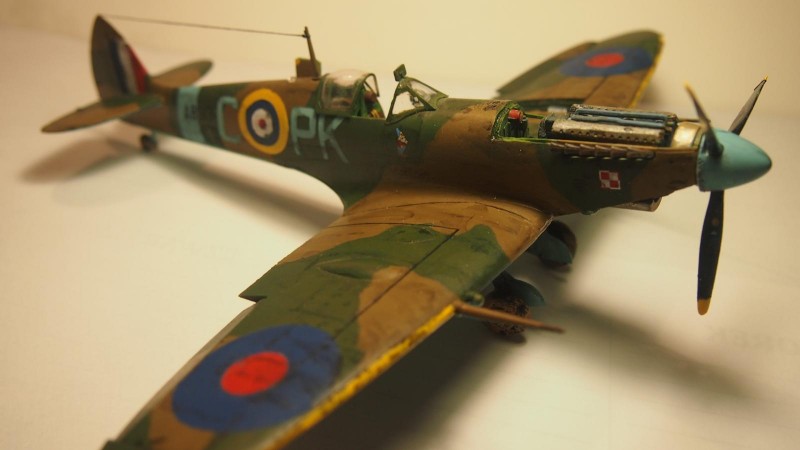
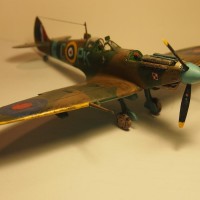
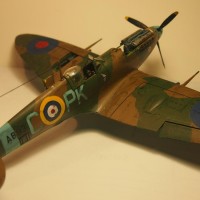
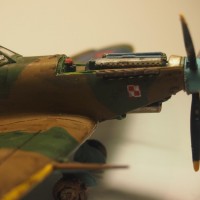
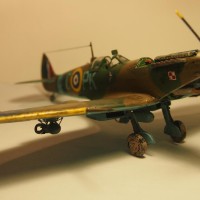
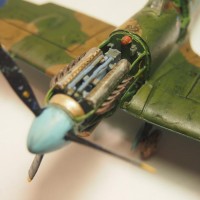
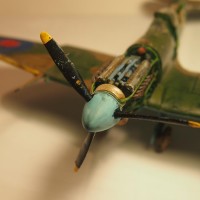
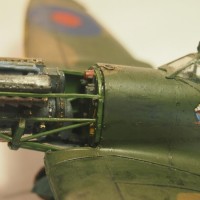
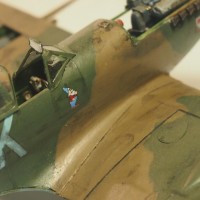
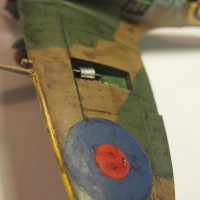
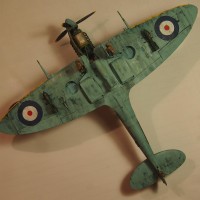
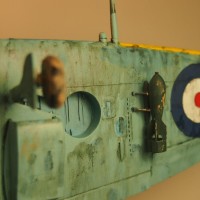
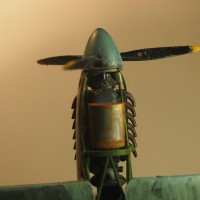
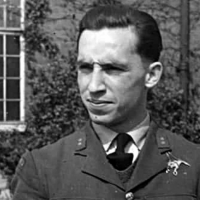
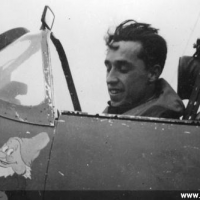
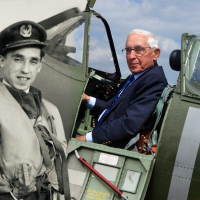
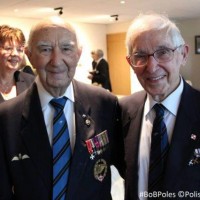
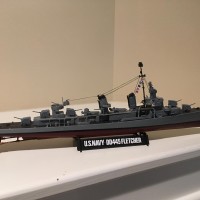
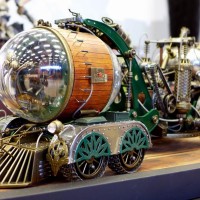


Un buen artículo para un piloto que lo merece!Bien hecho Lucasz.
Thank you very much, Julio. Best regards.
Lukasz, Nice looking Spitfire and although I have a standing rule, I never criticize anybody's model, I can see you are a person with a lot of talent and are eager to get some pointers. Your paint scheme/camo looks really good as is your basic construction and the markings/decals. A little too heavy on the weathering. try some pastel chalks and maybe pre-shading your panel lines. My rule is "cleaner is always better than too dirty". Remember aircraft never looked like tanks !
I hope this helps. I've had a lot of people give me suggestions over the years and still get advice today. I really look forward to your future builds.
Thank You, Terry, for your comment. It is much appreciated. I love constructive critic, and Your comment is 100% valid. I weathering the plane some times ago and know only little about that. First of all is that I haven't prevented the painting by a clear coat before applying decals and washes. It was my first real attempt of applying weathering. My next goal is to produce as clean airplane as possible. And the most important all the work was done by brush (I bought the first airbrush approximately 2 weeks ago).
Great history lesson Lukasz, and it's a nice looking Spit. I agree with Terry the weathering is bit too much. I always go but the old saying "less is more." If that makes any sense.
Thanks, Tom. Best regards.
A nice tribute and slice of history, and a good-looking model. Don't worry, you have all the basic skills, the finesse will soon follow! I look forward to seeing how your builds evolve. You can almost see each new skill or process I attempt to add to my repertoire with each post.
The same for mine. On every project, I apply something new. Best regards Łukasz
Well, I agree with Terry that your weathering may be slightly overdone, but perhaps only on the underside. I think that the weathering on the top and overall is really excellent. The rusting around the engine I think is spot on. It looks very realistic, even close up. As an amateur I have not produced anything better so I cannot find criticism with your model. Good tenacity in pursuing a few different weathering techniques. I think it indicates someone intent on self-improvement. Probably your best one yet. - and thanks for introducing me to Kornicki.